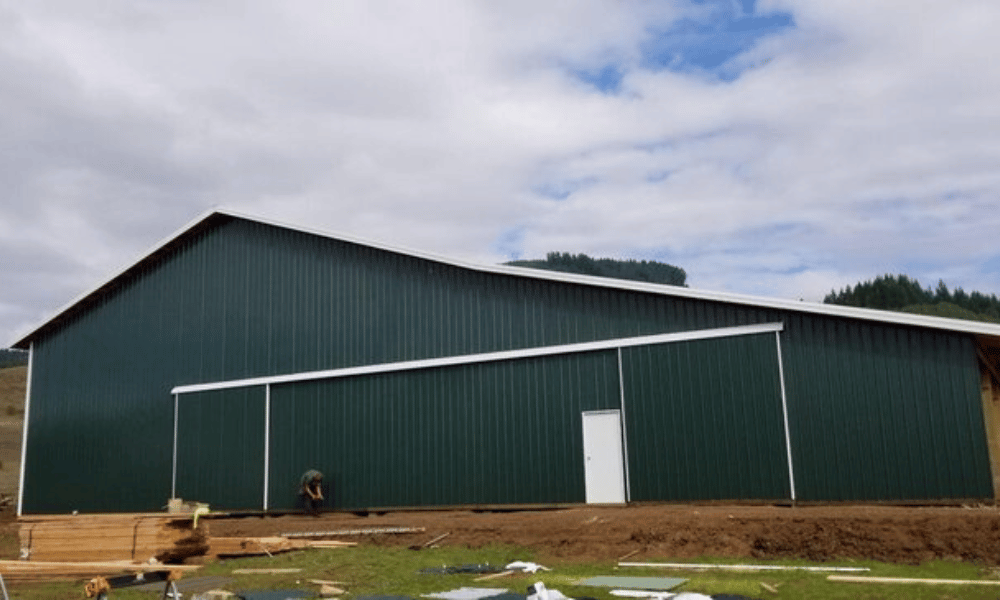Introduction
When it comes to constructing a pole barn garage, size matters—immensely. Getting the dimensions right not only affects aesthetics but also impacts functionality, resale value, and your overall satisfaction with the space. This article dives deep into the common pitfalls that homeowners encounter when selecting the size of their pole barn garages. Whether you're planning to park a vehicle, store tools, or create a workshop, understanding how to avoid these mistakes will make your experience smoother and more enjoyable.
Avoid Common Mistakes When Choosing the Size of Your Pole Barn Garage
Choosing the correct size for your pole barn garage is crucial. Many people often rush this decision or overlook critical factors, leading to regret down the line. Here are some key considerations:

- Think about what you intend to use your garage for. Will it just be for parking vehicles? Or do you plan on using it as a workspace? Consider future needs as well—might you want an additional vehicle or more storage in a few years?
- Before breaking ground, familiarize yourself with local zoning laws and building codes, which may dictate minimum or maximum sizes. Check if there are any restrictions related to setbacks from property lines.
- Always factor in your budget when choosing dimensions. Larger sizes mean higher costs—not just for materials but also for permits and labor. Create a financial plan that includes not only construction costs but also ongoing maintenance expenses.
- The land where you plan to build can significantly influence size choices. Is it flat? Are there drainage issues? Assess any existing structures on your property that may limit available space.
- If you're uncertain about future needs, consider designing your garage with expansion in mind. Leaving room for future additions can save you time and money later on.
- Don't forget about vertical space! If you're storing tall items like RVs or boats, make sure to account for height when designing your pole barn garage.
Key Factors Influencing Your Decision
1. Types of Vehicles
Understanding Vehicle Dimensions
- Cars vary in size from compact models to large SUVs and trucks. Measure your vehicles accurately before determining how much space you'll need.
Parking Configuration
- Will you park side by side or back-to-back? This can affect the depth and width requirements significantly.
2. Storage Needs
Tools and Equipment
- Do you have lawn equipment, tools, or seasonal items that require storage? Consider built-in cabinets or shelving that could maximize vertical storage space while minimizing floor area used.
Future Purchases
- Will you be acquiring more tools or equipment down the road? It's wise to account for these future purchases now rather than later.
3. Workspace Requirements
Designing Functional Areas
- If you're planning on using part of your garage as a workshop, you'll need extra room for workbenches and maneuverability.
Comfort Is Key
- Ensure there's enough space to move around comfortably while working on projects without feeling cramped.
Evaluating Different Sizes: A Comparative Table
| Size (sq ft) | Ideal Use Case | Pros | Cons | |--------------|-------------------------------------------------|---------------------------------------|---------------------------------------| | 400 | Small vehicle storage | Cost-effective | Limited functionality | | 800 | Standard car + small workshop | Balance between cost & utility | Might feel cramped with multiple items| | 1200 | Multiple vehicles + large workshop | Ample storage & workspace | Higher initial investment | | 1600+ | Large RVs + extensive workshop | Great flexibility | Requires significant land area |
Common Miscalculations When Planning Your Pole Barn Garage Size
1. Underestimating Space Needs
Many people think they can get away with smaller spaces until they realize they’ve got too much clutter—or Springfield garage building experts worse yet—a vehicle that doesn’t fit!
2. Ignoring Future Growth
It's easy to focus solely on current needs; however, life changes quickly—new family members or hobbies may require more space sooner than anticipated.
3. Not Consulting Professionals Early Enough
For many homeowners, DIY planning might seem appealing until complications arise during construction; consulting an architect helps avoid common miscalculations early on.
FAQs About Choosing the Size of Your Pole Barn Garage
1. What’s the average size of a pole barn garage?
The average size varies based on purpose but generally ranges from 800 sq ft for standard uses up to 1600 sq ft for larger projects like RV storage.
2. How do I determine if I have enough land?
Check local zoning laws regarding setbacks and property lines; then measure your plot against desired dimensions.
3. Can I build my pole barn garage without permits?
Most municipalities require permits for new constructions; always check local regulations first!
4. Should I include insulation in my design?
If you plan on using your garage year-round or storing temperature-sensitive items, insulation is essential—even if it adds upfront costs!
5. How much does a pole barn garage cost per square foot?
Costs can vary widely based on materials chosen but typically range from $30-$70 per square foot depending on complexity and customizations.
6. What is the best material for making my pole barn durable?
Wood posts remain popular due to cost-effectiveness; however metal frames offer longevity against pests and weather damage over time!
Conclusion
Building a pole barn garage is an exciting venture filled with possibilities—but choosing its size can be fraught with challenges if you're not careful! By avoiding common mistakes through thorough planning and consideration of both current and future needs, you'll set yourself up for success in creating a functional space tailored just right for you!
Remember: it's always better to overestimate rather than underestimate—you'll thank yourself later when every inch counts! So take your time, consult professionals, engage in thoughtful discussions about potential uses—and before long, you'll have constructed not just any structure but an enviable addition that enhances both function and aesthetic appeal!